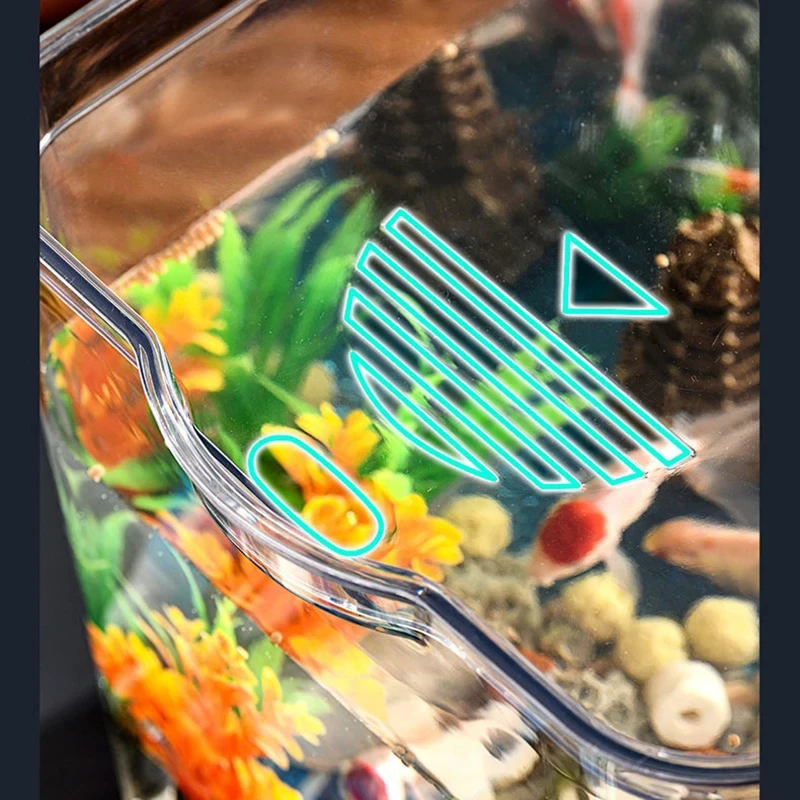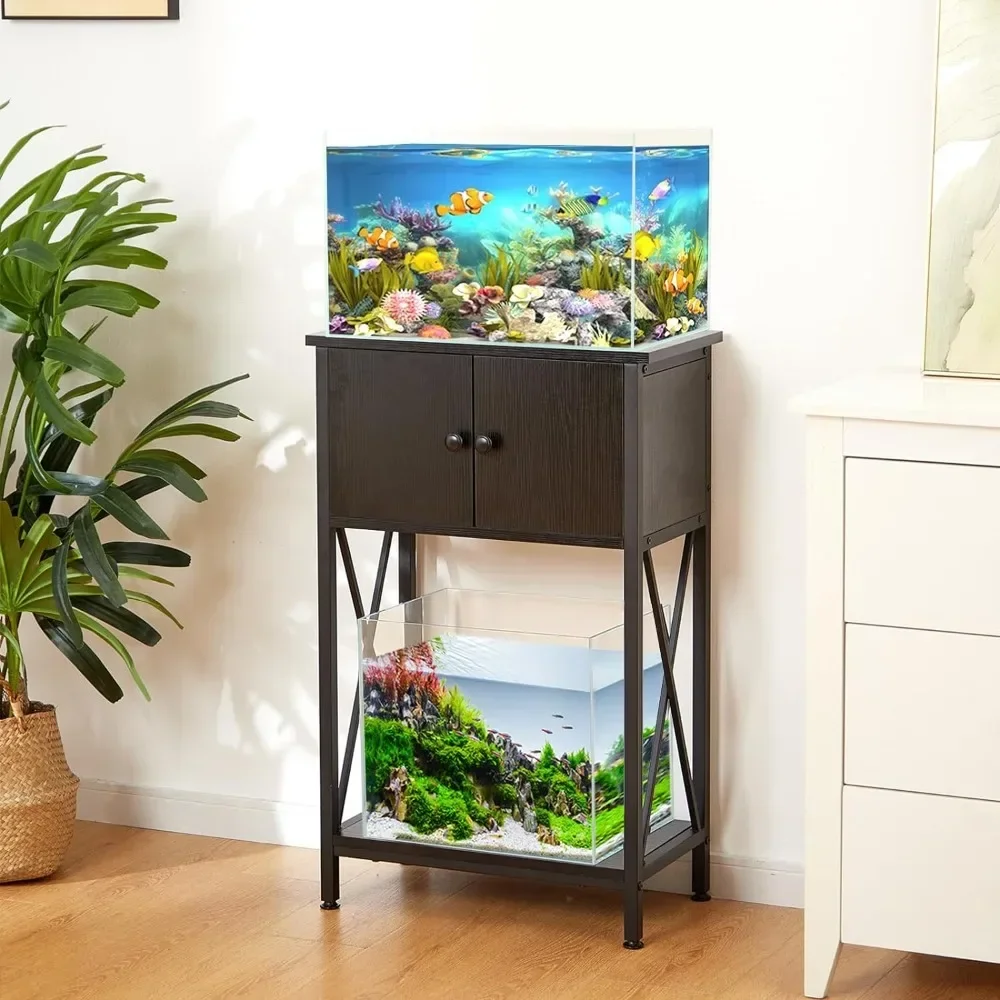Having a fish tank in your home can be an enjoyable and soothing experience, but what happens when an unpleasant smell starts emanating from it? Bad odors can detract from the beauty and tranquility of your aquarium. If not addressed promptly, these smells can also indicate potential health risks for your fish. This comprehensive guide will provide you with detailed steps on how to get rid of unpleasant smells from your fish tank, ensuring a clean and healthy environment for both you and your aquatic pets.
Understanding the Causes of Fish Tank Odors
Before diving into the methods of eliminating fish tank odors, it’s essential to understand the root causes. Unpleasant smells often result from organic matter breaking down within the tank. This could include uneaten food, fish waste, decaying plants, and dead organisms. When these materials accumulate, they produce ammonia and other compounds that are not only malodorous but can also be harmful to your fish.
Another common cause of bad odors is inadequate filtration. A fish tank needs efficient filtration systems to remove waste and maintain water quality. Poorly maintained filters can become clogged, leading to the build-up of harmful substances and, consequently, foul smells. Additionally, inadequate water changes can contribute to odor, as they allow waste and toxins to accumulate over time.

Regular Cleaning Routines
One of the most effective ways to keep your fish tank smelling fresh is to establish a regular cleaning routine. Cleaning the tank should be more than just a sporadic activity; it needs to be a structured part of your aquarium maintenance schedule. Begin by setting a specific day each week for partial water changes. Regular water changes dilute the concentration of waste products, making it harder for bad odors to develop.
When performing water changes, aim to replace about 10-20% of the tank’s water. Use a siphon to remove debris from the substrate, where uneaten food and waste tend to settle. Clean the tank glass with an algae scraper to remove algae build-up that can contribute to unpleasant smells.
Additionally, clean any ornaments, rocks, or decorations in your tank. These often harbor dirt and organic matter that contribute to odor. Use a gentle brush and tank water to scrub them clean, avoiding any soaps or chemicals that could harm your fish.
Proper Filtration Systems
An efficient filtration system is the backbone of a healthy aquarium, playing a crucial role in eliminating foul odors. Make sure your tank is equipped with a filter that’s appropriate for its size and the bioload it carries. Filters generally come in three types: mechanical, chemical, and biological, and each serves a unique purpose in maintaining water quality.
Mechanical filtration uses sponges or pads to physically remove debris from the water. These components should be rinsed out every few weeks to ensure they operate efficiently. Chemical filtration, often using activated carbon, helps to remove toxins and odors from the water. Replace the carbon media regularly, as it loses effectiveness over time.
Biological filtration involves using beneficial bacteria to break down harmful compounds like ammonia and nitrites. Ensure that your biological filter media is well-maintained by avoiding over-cleaning and allowing bacteria colonies to thrive. Periodically check your filter system for any signs of wear or clogs that could impede its function.
Feeding Practices
Overfeeding is a leading cause of foul odors in fish tanks. Uneaten food decomposes, producing harmful compounds and bad smells. To mitigate this issue, feed your fish only what they can consume within a few minutes. Different species have varying dietary needs, so research your fish’s specific requirements to avoid overfeeding.
Use high-quality fish food that is less likely to break down quickly. Some foods contain fillers and low-quality ingredients that decompose faster, leading to excess waste and odors. Instead, opt for reputable brands that offer nutritionally balanced diets designed for your species of fish.
Additionally, remove any uneaten food after feeding time. A feeding ring can help contain food in a specific area, making it easier to siphon out leftovers. Monitoring your feeding practices can significantly reduce the build-up of waste, thereby minimizing odors.

Plant and Algae Management
Plants and algae are another critical aspect to consider. While live plants can enhance the aesthetics of your tank and help maintain water quality, decaying plants can produce foul odors. Regularly trim dead or dying plant leaves and remove any plant debris from the water to prevent it from decomposing.
Algae, on the other hand, can quickly spread and contribute to both bad smells and poor water quality. Use an algae scraper to clean the tank walls regularly. Adding algae-eating fish, shrimp, or snails can also help keep algae levels in check. Ensure that your tank lighting is on a proper schedule, as excessive light can encourage algae growth.
Introducing a balanced variety of plant species can help maintain a stable ecosystem. Fast-growing plants consume excess nutrients quickly, preventing nutrients from fueling algae blooms. Plant maintenance is an ongoing task, but it pays off by keeping your tank odor-free and visually appealing.
Water Parameters and Testing
Maintaining proper water parameters is essential in preventing unpleasant odors. Regularly test your water for key parameters such as pH, ammonia, nitrites, nitrates, and general hardness. Kits are available that make this testing straightforward and accessible, even for beginners.
Ideal water conditions vary depending on the species of fish you keep. However, keeping ammonia and nitrite levels at zero is critical, as these compounds are toxic to fish and contribute significantly to bad smells. Nitrates should also be kept at minimal levels through regular water changes and the presence of live plants.
If you find your water parameters are off, take immediate steps to correct them. Products are available to neutralize ammonia and other toxins, but they should be used alongside proper tank maintenance practices rather than as a substitute. Consistently monitoring and adjusting your water parameters helps maintain a healthy, odor-free environment for your fish.
Aeration and Water Movement
Proper aeration and water movement are vital for preventing bad smells in your fish tank. Stagnant water can lead to a build-up of anaerobic bacteria, which produce foul odors. Incorporating air stones, air pumps, or powerheads can ensure adequate water circulation and oxygenation, promoting a healthier tank environment.
Aeration improves the gas exchange at the water’s surface, helping to remove harmful gases like carbon dioxide and hydrogen sulfide, which can contribute to bad smells. An adequately aerated tank also supports the beneficial bacteria required for effective biological filtration.
Ensure that water is circulating throughout the entire tank, reaching all areas where waste might accumulate. Adjust the positions of water inlets and outlets and consider using multiple sources of aeration in larger tanks. Enhanced water movement aids in waste breakdown and prevents the formation of dead zones where anaerobic bacteria thrive.

Using Activated Carbon
Activated carbon is a powerful tool for controlling odors in fish tanks. It works by adsorbing impurities, toxins, and odors from the water. Most modern filters have compartments that can accommodate activated carbon media, making it easy to integrate into your existing filtration system.
For optimal results, replace the activated carbon every few weeks, as it becomes saturated and loses its effectiveness over time. When adding or removing activated carbon, follow the manufacturer’s guidelines to avoid disrupting your tank’s ecosystem.
Keep in mind that while activated carbon can effectively handle many odor issues, it should be used in conjunction with other good tank maintenance practices. Relying solely on activated carbon without addressing underlying causes like overfeeding or inadequate filtration will only offer temporary relief.
Conclusion
Eliminating unpleasant smells from your fish tank involves a combination of regular maintenance, proper feeding practices, and effective filtration. By understanding the causes of bad odors and taking proactive steps to address them, you can ensure a clean, healthy environment for your aquatic pets. Routine water changes, efficient filtration, proper aeration, and the strategic use of activated carbon and beneficial bacteria all play essential roles in maintaining an odor-free tank.
By implementing these comprehensive guidelines on how to get rid of unpleasant smells from your fish tank, you can enjoy the serene beauty of your aquarium without the distraction of foul odors. Regular attention and care will not only keep your tank smelling fresh but also contribute to the overall health and well-being of your fish, creating a harmonious aquatic environment that you can take pride in.










